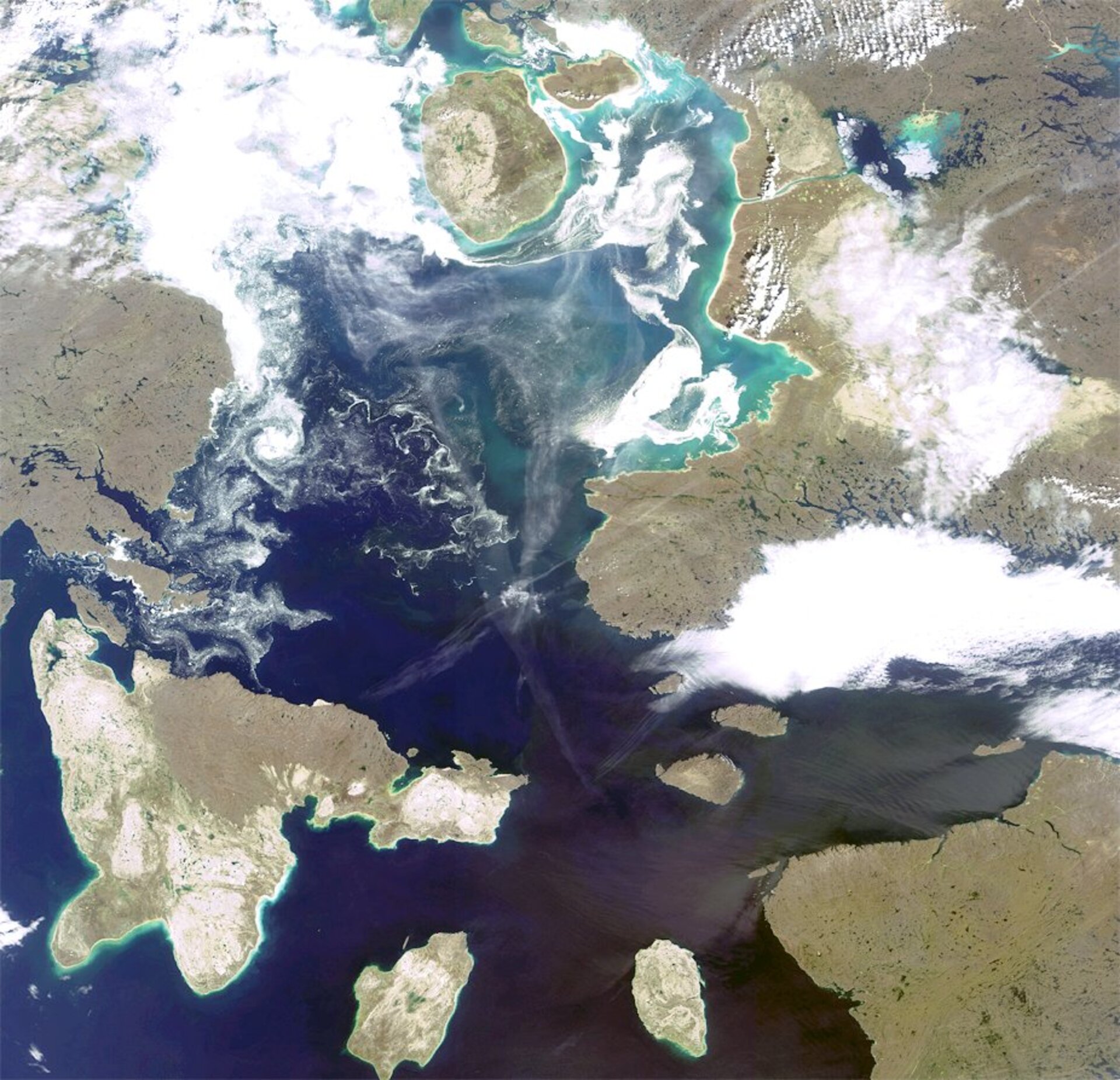Earth from Space: Canadian Arctic
This Envisat image over the Nunavut territory in the Canadian Arctic captures the contrast of the icy shallower waters of Foxe Basin (top centre) with the warmer deeper waters of Foxe Channel (bottom).
Foxe Basin is a shallow extension of the Atlantic Ocean located between Baffin Island (top right), the fifth largest island in the world, and the Melville Peninsula (upper left, partially cloud covered). Its depth varies between 100 m in the northern section and 400 m in the south.
The basin remains ice-covered for most of the year, with landfast ice (sea ice that remains attached to the coast) dominating in the north and pack ice (normally broken separate blocs of ice) covering the deeper southern waters. As visible, ice is kept in constant motion by surface currents and strong winds.
This area is one of the most biologically rich and diverse areas of the Canadian Arctic, supporting colonies of bearded seals and the largest walrus herd in Canada. It is a summering area for bowhead, beluga and narwhal whales.
Stretching roughly 500 km across at its widest point, the basin is home to the last large landmasses discovered in North America. Prince Charles Island (the large round island visible in top centre), Air Force Island (located directly west, or right, of Prince Charles Island) and Foley Island (north of Prince Charles Island) were all discovered in 1948 from aerial surveys.
Foxe Basin connects with Hudson Bay (bottom) and Hudson Strait (located beneath Baffin Island, cloud covered) via the 320-km long Foxe Channel.
Ungava Peninsula is visible in the bottom right corner beneath the Hudson Strait. The larger island to its northwest is Southampton Island. The two smaller islands at the bottom of the image (Coats, left, and Mansel) lie at the northern part of Hudson Bay.
This image was acquired by Envisat's Medium Resolution Imaging Spectrometer (MERIS) instrument on 31 July 2009, working in Full Resolution mode to provide a spatial resolution of 300 m.






